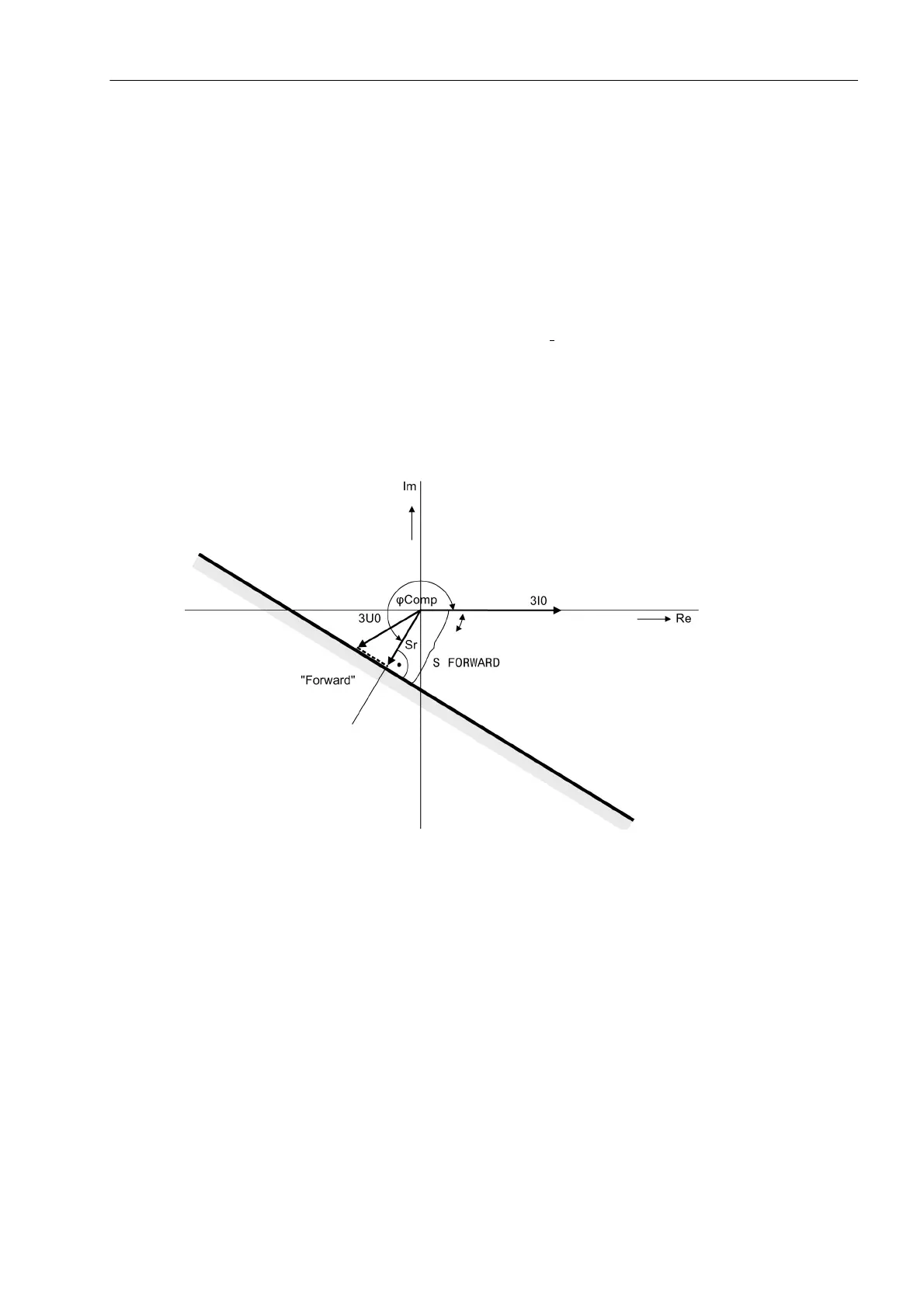Functions
2.8 Earth Fault Protection in Earthed Systems (optional)
SIPROTEC, 7SD5, Manual
C53000-G1176-C169-5, Release date 02.2011
229
Determination of direction with compensated zero-sequence power
The zero-sequence power may also be used for direction determination. In this case the sign of the compen-
sated zero-sequence power is decisive. This is the zero-sequence power component S
r
as mentioned above
under „Zero-Sequence Power“ in direction of a configurable compensation angle ϕ
comp
, i.e.
S
r
=3I
0
·3U
0
·cos(ϕ – ϕ
Comp
).
The direction determination yields
• forward if S
r
is positive and S
r
> S FORWARD,
• reverse if S
r
is negative and |S
r
| > S FORWARD,
The determination of direction requires a minimum current 3I
0
and a minimum displacement voltage which can
be set as 3U0>. The prerequisite is still that the compensated zero-sequence power has a configurable
minimum magnitude. Direction determination is also blocked if the device detects a fault condition in the voltage
transformer secondary circuit (binary input reports trip of the voltage transformer mcb, „Fuse Failure Monitor“,
measured voltage failure monitoring) or a single-pole dead time. Figure 2-112 shows an example of the direc-
tional characteristic.
Figure 2-112 Directional characteristic with zero sequence power, example S
r
= setting value S FORWARD
Selection of the earth faulted phase
Since the earth fault protection uses the quantities of the zero-sequence system and the negative sequence
system, the faulted phase cannot be determined directly. To enable single-pole automatic reclosure in case of
high-resistance earth faults, the earth fault protective function features a phase selector. The phase-selector
detects by means of the distribution of the currents and voltages whether a fault is single-phase or multi-phase.
If the fault is single-phase, the faulted phase is selected. The phase selector is blocked during a single-pole
automatic reclosure.
Once a multi-phase fault has been detected, a three-pole trip command is generated. Three-pole tripping is
also initiated if single-pole tripping would be possible but is not permitted. Single-pole tripping is prevented by
the setting or three-pole coupling of other internal protection functions or of an external reclosing device via
binary input.
